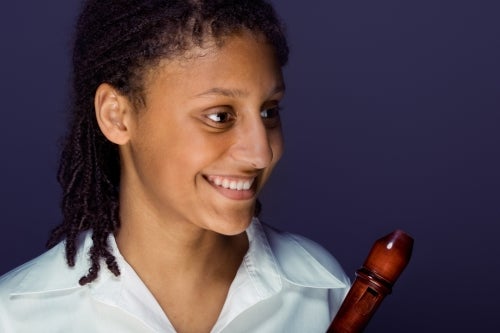Charlotte Barbour-Condini, London Octave St Martin in the Fields

To ‘record’ derives from the Latin recordari, ‘to remember’, and that’s what medieval English minstrels did with the instrument to which they gave this name.
In Europe, recorders were known as ‘flutes’, and when Baroque music came to England, so did that nomenclature for the instrument, which only reverted to ‘recorder’ in the 19th century. The warm and breathy sound of this simple instrument has great charm when played in a consort, as Samuel Pepys noted excitedly after a concert: the sweet wind-music ‘did wrap up my soul so that it made me really sick, just as I have formerly been when in love with my wife’.
In medieval Italian art, angels played recorders in threes to symbolise the Trinity, but the instrument also had erotic connotations: two bound together signified sexual union, while one alone could signify male self-gratification, as in the English phrase ‘playing his flute’.
This ‘easy’ instrument has always endeared itself to educators and amateurs – Henry VIII ‘exercised himself dailie’ on it – and when the Dolmetsch recorder went into industrial production it became enshrined in the primary school curriculum.
In the 1960s its serious potential was rediscovered by the early-music brigade led by the tragically short-lived David ‘Pied Piper’ Munrow, since when a number of dedicated virtuosi have shown what spells can be cast with it. And the latest of these virtuosi is 16-year-old Charlotte Barbour-Condini: playing Baroque concerti with London Octave, she lifted what would otherwise have been a pretty run-of-the-mill concert onto an altogether higher plane.
Using an alto recorder for Vivaldi’s ‘Concerto in C minor’, she led the unison strings with assurance, before taking off on solo flights with passage-work of impressive precision. Her phrasing in the Largo was so subtly-shaded that she might have been playing the flute proper, which was no mean achievement; her cadenza was both adventurous and refined, and in Sammartini’s ‘Concerto in F’ she employed a descant instrument with remarkable lightness and agility.
All this raises an intriguing prospect if she decides to focus exclusively on the recorder, rather than dividing her energies, as she does now, between that and the violin she plays as leader of the Hackney Youth Orchestra. Brilliant young violinists are ten-a-penny, but recorder virtuosi are rarities – and nobody else has this talented girl’s sunny charisma. One to watch.
Subscribe to Independent Premium to bookmark this article
Want to bookmark your favourite articles and stories to read or reference later? Start your Independent Premium subscription today.

Join our commenting forum
Join thought-provoking conversations, follow other Independent readers and see their replies